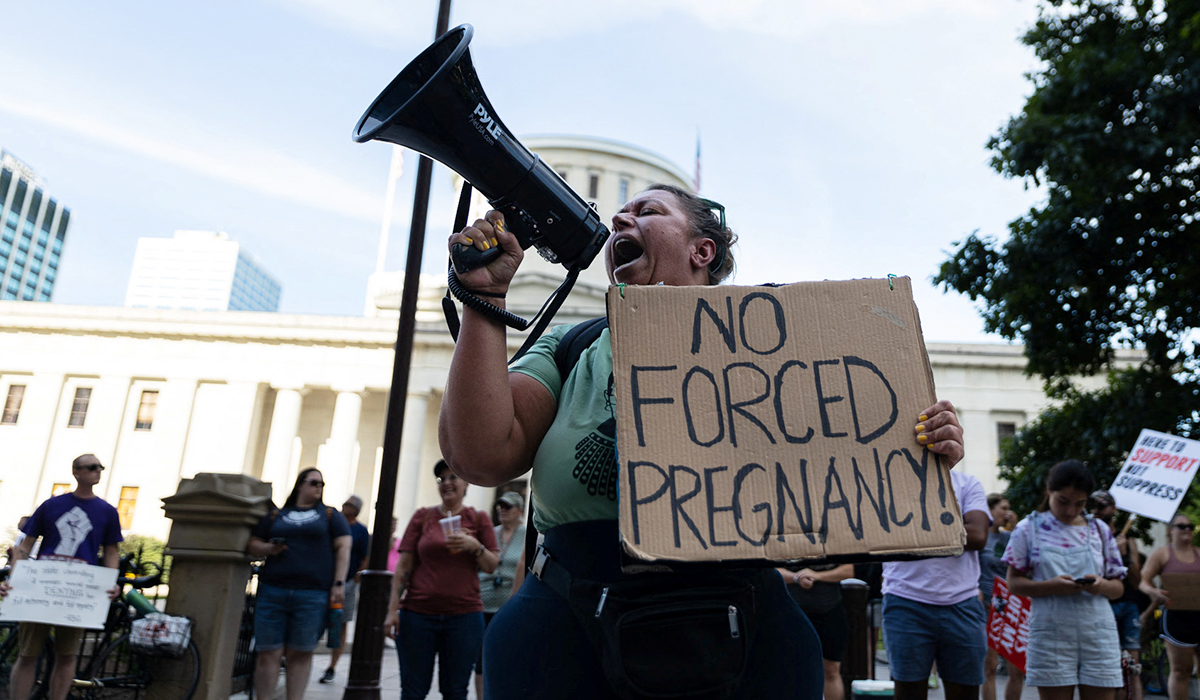


A proposed state-constitutional amendment in Ohio would open a Pandora’s box of extreme consequences under the guise of creating rights to reproductive decision-making.
The ballot initiative is transparently designed to undo the effects within Ohio of the U.S. Supreme Court’s decision last year in Dobbs v. Jackson Women’s Health Organization, which overruled the Court’s nearly half-century-long judicial fiat on the issue of abortion starting with Roe v. Wade (1973) and including the revised standard of review it had adopted in Planned Parenthood v. Casey (1992). The Ohio proposal, if enacted, would go beyond the former regime under Roe and Casey.
Take the proposal’s effect of barring both parental-consent and parental-notification laws. Parental-involvement laws have been a fixture in the debate over abortion practically since it became a nationally contested issue. In the years following its decision in Roe, the U.S. Supreme Court struck down parental-consent laws for lacking a judicially invented exception by which minors could bypass their parents and get permission from a judge. But it did not reject the notion of parental-consent requirements out of hand as long as these came with the bypass option.
If Ohio adopts the proposed amendment, the state’s supreme court can be expected to go further than the U.S. Supreme Court in its headiest days and reject out of hand any requirement of parental involvement, whether regarding consent or notification.
For that matter, the post-Roe Court struck down the most basic regulations to protect mothers and their babies, including standard-of-care provisions to optimize the chances of fetal survival, informed-consent requirements for mothers that provide information on fetal development, and a 24-hour waiting period. The nation’s highest court acted, in the words of Justice Byron White’s partial dissent in Planned Parenthood v. Danforth (1976), as an “ex officio medical board with powers to approve or disapprove medical and operative practices and standards throughout the United States.”
This phenomenon continued even after Casey, where the Court purported to modify its previously operative “strict scrutiny” standard that treated regulation with aggressive skepticism toward legislatures. Under Casey’s more deferential “undue burden” standard, the Court did an about-face on informed consent and waiting periods. The Ohio proposal’s language would bar interference with the created right and make no such accommodations, rendering the federal standard that governed for 30 years before Dobbs insufficiently protective of abortion. And even after Casey was decided, the Court at one point invalidated a state ban on partial-birth abortion and, in recent years, struck down requirements that doctors performing abortions have hospital-admitting privileges.
As noted in our previous commentary, the Court did all of this prior to Dobbs despite its lacking any textual basis in the Constitution for its decisions. Imagine how much worse matters would be in Ohio with an amended constitution. In addition to its explicit protection of abortion from interference, the proposal insists that any measures to advance a person’s health must “us[e] the least restrictive means” of doing so, tethered to “widely accepted and evidence-based standards of care.” That is effectively an invitation to the Ohio supreme court to behave like the state’s ex officio medical board and apply the “strict scrutiny” standard — on abortion and other procedures — of the pre-Casey years by which the Court had invalidated some of the mildest abortion regulations.
Indeed, an amended state constitution would give license to Ohio courts to go further than the U.S. Supreme Court ever did. In Connecticut v. Menillo (1975), decided by the same justices who were on the Roe Court, a Connecticut law criminalizing attempted abortion by “any person” was held to remain fully effective against nonphysicians who performed abortions. The Ohio proposal states that the government cannot interfere with a “person or entity” that provides assistance, without limiting the protected parties to doctors or even medical professionals more broadly. Nonphysicians could expect to enjoy a level of judicial protection in the performance of abortions that they never received from federal courts. And, as previously noted, Ohio’s amended constitution would involve language that would effectively neutralize a prohibition of post-viability abortions.
In short, armed with the language of the Ohio proposal, the state courts can be fully expected to carry out more-extreme abortion policies than the U.S. Supreme Court ever did during one of the sorriest chapters in its history.
Carrie Campbell Severino is president of Judicial Crisis Network. Frank J. Scaturro is vice president and senior counsel of JCN and a former special counsel to the House Select Investigative Panel on Infant Lives.
